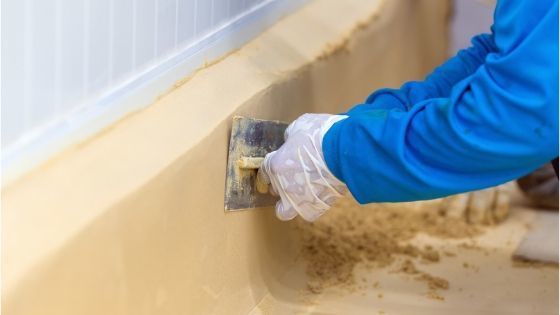Here is a hot topic—Epoxy vs. Polyurethane! This argument can be heard between sales reps and homeowners throughout the country. “Epoxy is better!” “Urethane is better!” “They don’t know what they’re talking about” – all reps. So how do you shuffle through the noise and find the facts? By reading, of course!
We have been in the Foundation Crack Repair industry for a long time now, and we use both for different applications. Each has their merit and place, however, is important to know when to use which product.
No “One Size Fits All”
While many sales reps in the industry would have you believe different, there is no “one size fits all” product to fix any issue you have in a foundation. There are applications where non-expanding Epoxy is appropriate, and Polyurethane is not. There are other situations where Polyurethane is the product to use and Epoxy would not be advised.
As Epoxy is ridged and does not expand, it is best used for those repairs that have no movement in them, or shouldn’t:
- Foundation Cracks
- Form Ties
- Rock Pockets/Honeycombing
These repairs are the most common issues in a foundation. Foundation Cracks form most commonly from initial shrinkage/drying of the concrete. While some walls are in a state of movement/settlement, most walls are not. Most foundation walls stop settling into the ground with 7 years of construction, and do not move after that for over 250 years.
As the wall/void is not moving (or should not be), a non-expanding structural Epoxy is the best solution for the repair. This Epoxy will fill the void and bond with the concrete, making a stronger bond than concrete itself. This allows the area to be sealed from water penetration, for good.
Epoxy does NOT, however, stop structural movement. Many sales reps will argue that Polyurethane is better for Foundation Cracks, as it allows for small movement in your wall. If that doesn’t make you STOP and ask “WAIT, my wall is MOVING??” then we are glad you are here educating yourself. Foundation Walls should not be actively moving! If they are, there is not a single company out there that warranties them. In fact, read the back of every warranty from a waterproofer you ever received. On the back of every contract, it will read that the warranty is void if the home is settling. If Polyurethane allows for movement in the wall, why is the warranty void if the wall moves???
Short answer, because it’s a “sales line” and not an actual reference to fact or the effectiveness of the product. It sounds good to the uneducated consumer, so they say it all the time. But it holds not truth in the real world. When it comes to repairing Foundation Cracks, Non-Expanding Epoxy is the way to go, if you want the repair to last.
A Time and a Place
While we just spent a little time bashing Polyurethane above, we want to stress it is not a useless product, it has many uses! It simply, like anything, needs to be applied to the right problem in order to be effective.
We use Polyurethane Epoxy when injecting certain voids in the foundation:
- Water/Gas/Electrical Line Penetrations through Foundation Wall
- Sewer Penetrations through Foundation Wall
- Large/Structural Foundation Cracks with Voids
Now, reading through that list, you may ask yourself, “Hey, why did you put Foundation Cracks under that list, even if they are Large? Didn’t you say they were bad?”
For normal Foundation Cracks, Polyurethane is the wrong product to use. However, when we are dealing with a large crack (that we are addressing structurally as well with reinforcement or underpinning), it can be advantageous to fill the large void with an expanding Polyurethane. This allows the void to be filled without wasting buckets of epoxy, which can sometimes drain into the ground if the dirt is separated from the foundation in these structural situations.
Another situation expanding Polyurethane is used is when we are dealing with the pipes that come through the wall of the foundation. Water, Sewer, Gas, Electric, Vent, and other pipes come through the foundation walls into our homes.
The way these are installed is by drilling a hole slightly larger than the pipe itself. The pipe is inserted through, and then sealed on both outside and inside with a Hydraulic Cement. A void is still present between the pipe and the wall, and eventually the Hydraulic Cement wears away. Once this happens, water is allowed to fill the void and penetrate inside.
The Polyurethane is used here to push all the water out and completely fill the void around the pipe. The flexibility of the Urethane then allows for small movement in the pipe as water/liquid/gas travels through it. This will help maintain the integrity of the seal and be able to last.
When you have a water issue in your basement, be sure that you call a qualified, reputable contractor out to give you a complete evaluation. Remember, there is no “one-size-fits-all” product for all issues in your basement. A proper solution will need to be made to combat a specific issue. Feel free to contact us for additional information about when to use Epoxy vs. Polyurethane.
Thanks for reading, and as always:
“Not Everything’s Better When Wet!”






